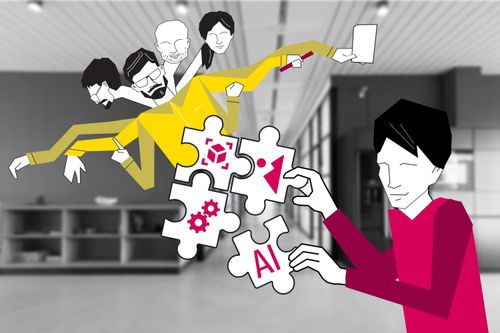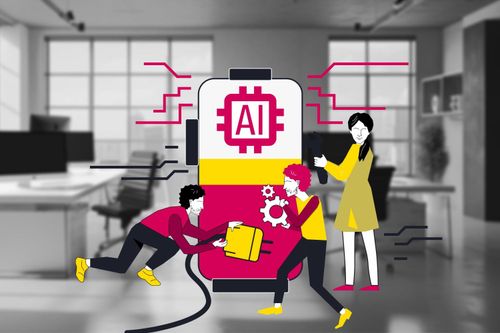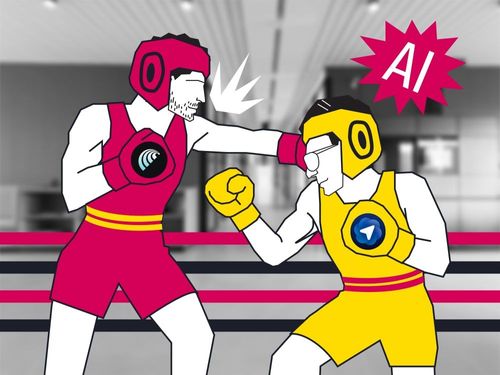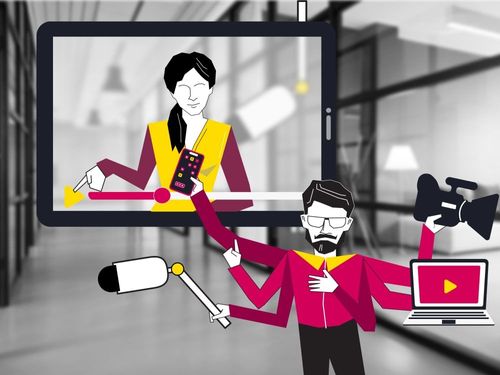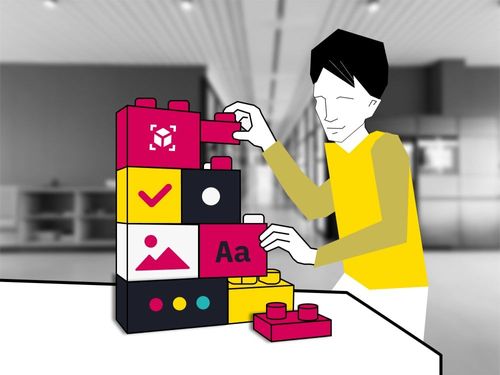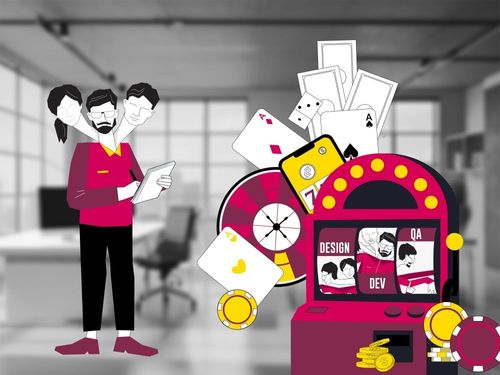
What’s the optimal developers-to-designers ratio? When is it time to bring in a tech lead — or an architect?
Most of the tech leaders' answers will sound like “when the need arises”, "let's see how it will work then". But that's the way to project stall, burn out budgets, or collapse under their own weight.
As someone who manages software developer teams for other companies, I’ve seen a pattern: the right mix of roles is the difference between “nearly launched” and “already scaling.”
The Basics: Who Do You Need to start development?
For smaller projects or MVPs, you need a streamlined team that maximizes efficiency without overstretching resources. Data from the “Accelerate State of DevOps Report” shows that small, highly aligned teams are 20% more likely to meet their deadlines.
Here’s my recommendation for such a minimal team:
- Project Manager: aligns tech with business goals and keeps everyone moving.
2-3 Developers: Front-end, back-end, or full-stack, depending on your product. - Quality Assurance Specialist: A dedicated QA ensures everything works as intended before it reaches the user. Skipping QA can lead to costly fixes later. A single bug can ruin the user experience—or even a project’s reputation.
- UX/UI Designer: Design improves user adoption rates by 30%. And first impressions really matter. According to Hotjar, consumers cited slow loading times (93%), cluttered layouts (92%), and difficult navigation (84%) as factors that would push them to switch to a competitor’s website.
This setup is perfect for building an MVP (Minimum Viable Product) and startups or businesses testing a new product concept.
Scaling Smart: The Optimal Team for Medium-Sized Projects
Medium-scale projects require more specialization to handle complexity. According to DORA Metrics, teams with clearly defined roles and responsibilities are 50% more productive.
Here’s a balanced setup I would recommend using as a starting point for your consideration:
- Tech Lead help to build guidlines, architechture, and ensures code quality.
- 4-6 Developers: If you have team of front-end, back-end, and full-stack developmers you can handle multiple challenges like API development, mobile apps and etc.
- 2 QA Engineers: Incorporating QA engineers espesialy the one with automation experience helps to speed up regression testing and maintain quality as the project scales. Keep in mond that automation testing reduces bug-fixing time by up to 30%.
- 1-2 Designers allows you to create UX, UI intreface, and even made some research to improve iterection with your website or app. Also, designers help you to create brandbook, and guidless for development team.
- DevOps Engineer help to automates deployments and ensures smooth operations and uploading changes that are critical for growing projects.
The team structure menthioned above is balance of agility with depth. It fits for for scaling FinTech platforms or launching mobile apps.
Dream Team for Software Development: What a High-Performing Team Looks Like
For enterprise-level systems or complex multi-platform products, you need a diverse, highly skilled team. According to McKinsey, high-performing teams outperform average ones by 50% in large-scale projects.
Here’s how you assemble one:
- Product Manager & Scrum Master: the PM focuses on high-level strategy, while the Scrum Master ensures the Agile processes are followed, keeping the team on track.
- Tech Architect: A technical architect designs the system's structure, while a solutions architect ensures the system aligns with business goals.
- 8-10 Developers: Split across core functions like mobile, AI/ML, and API integration. For mobile-first projects, dedicate resources to both iOS and Android.
- 3-4 QA Engineers: Incorporate roles like performance testers and cybersecurity specialists to safeguard against vulnerabilities.
- 2-3 Designers: Add motion designers or accessibility experts to fine-tune the user experience.
- 1-3 DevOps: A dedicated team ensures zero downtime during deployment. It help to implement CI/CD solutions and scale your project without issues.
- Data Scientist: If your pojects uses large amonut of data, or have AI-driven products you need such exper to optimize data bases or for structuring information.
This team setup enables seamless delivery of large, complex projects, balancing innovation with operational stability.
Do You Need to Hire All Those People?
Hiring people directly is risky — the wrong people can ruin your teamwork and the whole project. I always recommend starting with minimal teams, getting the culture right, and then expanding. If you not sure wich type of hiring you need pass our quizz. In 2-min you'll get recommendation for you team setup.
But there’s another version: you can start by augmenting your team with external developers or outstaffing with a full external team that works well together and has a healthy internal culture.
If you’d like to consider one of these models (team augmentation or outstaffing), give us a ping. We might have the optimal organic team ready to start working for you.
Like this article? Follow me and Smartexe for more insights on leadership, tech recruitment, and building high-performance teams.

